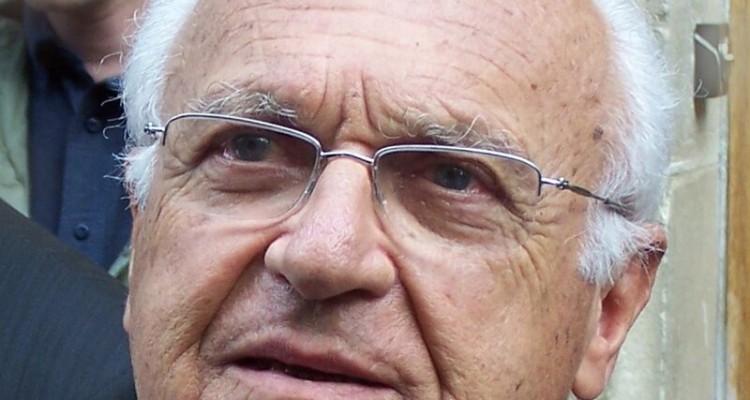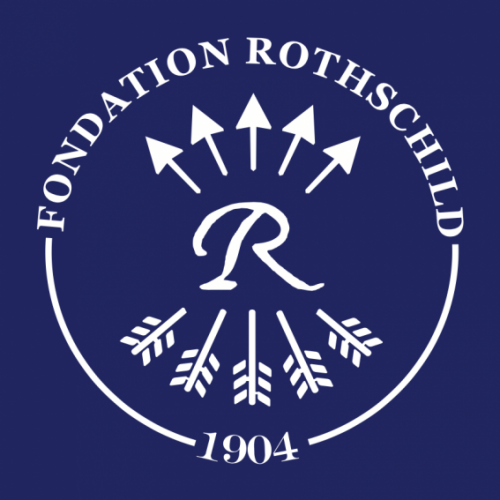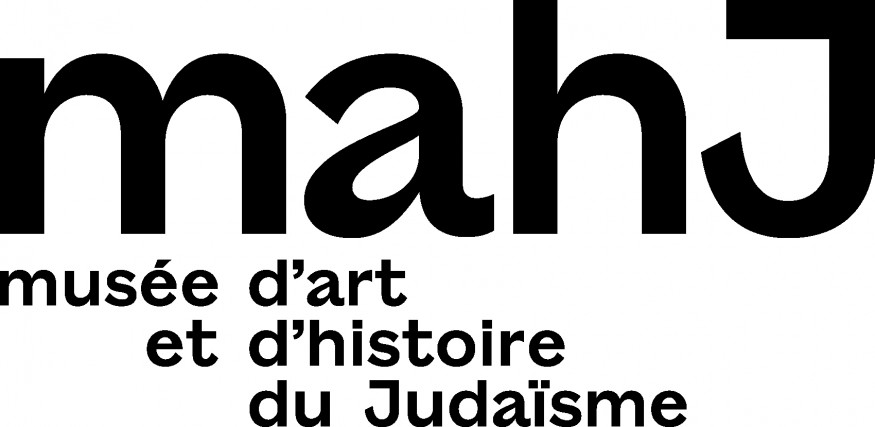Following the Euro 2020 final, K. opens its columns to SoFoot, republishing an article[1] which has just received the Franco-German Journalism Prize in the Young Talents category[2]. Adrien Candau and Julien Duez tell the story of Emmanuel Schaffer, born in Ukraine but raised in Germany, a survivor of the Holocaust who became the mythical coach of the Israeli team. After making Aliyah, Schaffer returned to the country of his childhood in the late 1950s to learn their methods of play. Criticized for this choice, he gave the Jewish state a winning team and led the country’s soccer team to its one and only World Cup appearance.
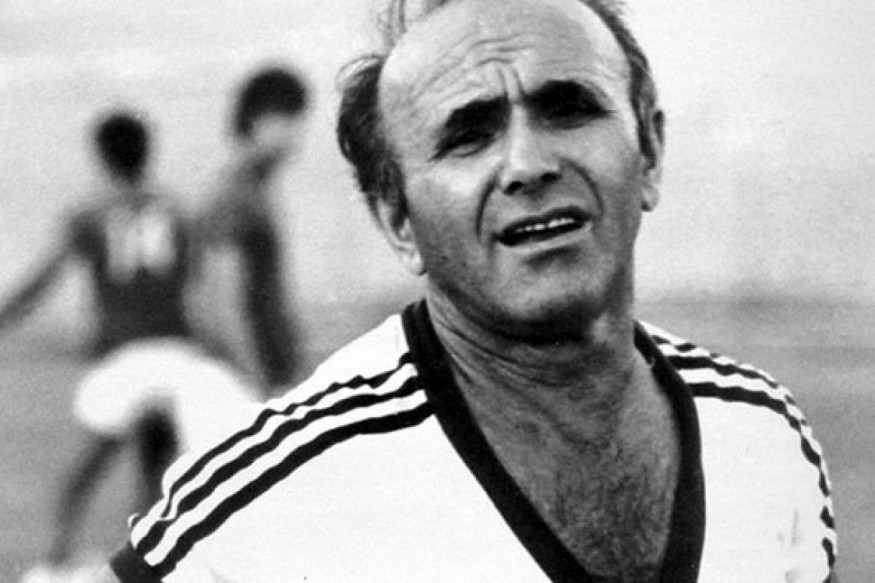
Sometimes, history is made with a mere gesture. Alexander the Great cut the Gordian knot; Rosa Parks refused to give up her seat on the bus; and Mordechai Spiegler just did his job, scoring a left-footed equalizer for Israel against Sweden on Sunday, June 7, 1970.
“I’ve scored a lot of goals like that in my career, but that one became the most important in the history of Israeli soccer,” said the center-forward 50 years later. The Mexican World Cup remains Israel’s only World Cup appearance to date, and Spiegler’s goal is the only one they scored there. It was a great achievement for the Nivcheret, a team whose roots lie thousands of miles away from Jerusalem, in the 1920s. In the Rhineland, a certain Emmanuel Schaffer wore out his trousers, without suspecting he would one day be considered “the greatest coach Israel has ever known”. So he was described in his 2012 funeral oration.
Emmanuel “Eddy” Schaffer’s youth was marked by a series of exiles, each provoked by the persecution faced by European Jews in the first half of the 20th century.
Born on February 11, 1923 in Drohobytch, a small town in Eastern Galicia, the son of a traveling salesman in the oil industry, Schaffer emigrated at a very young age to Recklinghausen, in the heart of the Ruhr. In Germany, he attended the local Jewish school with his three sisters–but not for long : There were clouds on the horizon. After the Nazis took power in 1933, the Schaffers fled Germany for Metz, and from there for the Saarland. When the small protectorate became part of the Reich in 1937, they returned to their starting point: Galicia. It was at the Beitar–the Zionist youth club–in Drohobytch that Schaffer signed his first license. The area was still under the control of the Red Army, so the question of racial laws did not arise. That changed in 1941 when the Nazis broke the Ribbentrop Pact and invaded Ukraine.
So, now, Eddy is 18 years old and will never see his family again. How did he escape the clutches of the SS? Survival instinct. “I was at school when the news reached us. The Russians had all left, so I too simply got the hell out,” he says. Barely an adult, the high school student was thrown on the road, alone–without his family, who had remained trapped behind German lines, and without news of their fate. Surviving diphtheria, typhus and malnutrition, he finally ended up in the depths of Kazakhstan, in Alma-Ata (now Almaty), a city under the Soviet flag, but geographically closer to China than to Europe. In the camp where he was interned, Schaffer made shoes and wore cleats: the former in a factory in Alma-Ata, the latter in his free time as a left-winger for the Dynamo, the local Politburo’s soccer team. It was while wearing the jersey of the political police club that he learned that almost his entire family had perished in an SS massacre in Stanislawow (now Ivano-Frankivsk) Ukraine, a town whose Jewish cemetery he would later help restore in 1993. When the Second World War ended, Eddy was 22 years old and, like many Jews, his ambition was to flee the ruins of Europe for Palestine, then under the British Mandate. However, administrative complications forced him to stay in a Poland where anti-Semitism was far from having disappeared. The proof was in the pudding: As early as 1948, the government banned Jewish associations, including ZKS Bielawa, the club founded by Schaffer, which he had succeeded in raising to the Polish second division. His call-up for military service was the last straw and the trigger for him to flee to his promised land, crossing Czechoslovakia, Austria and Italy. Once he arrived in Haifa, where he quickly took a job as a mechanic, the survivor was able to start his new life and his new career as an amateur footballer. Had the time come at last for him to put down his bags? No: It seems that, whether chosen or not, wanderlust is a hard condition to shake.
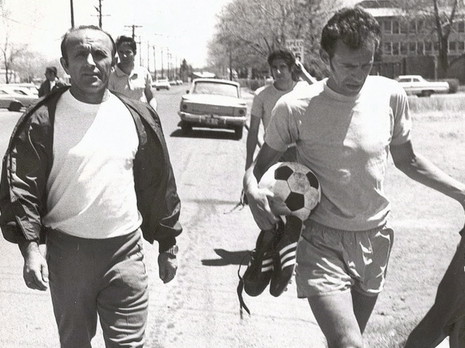
By the time he reached the age of Christ, Eddy had already worn the Israeli national team jersey eight times. But his 33rd birthday was marked by a serious leg injury that put an end to his destiny as a footballer. Like any good self-taught person, Schaffer saw every setback as an opportunity: “I always dreamed of becoming a coach,” he said. In 1957, the very selective Deutsche Sporthochschule (DSHS), the sports university in Cologne, opened its lecture halls to several Israeli trainee coaches eager to learn about sports management. In reality, Israelis generally did not have the qualifications to study there,” says Yakov Hadas-Handelsman, former Israeli ambassador to Germany. But after the tragedy of World War II, Germany understood that sports was a way to build ties with the Jewish state.” This is anything but trivial, because at the time, as Manfred Lämmer, DSHS professor emeritus and Schaffer’s personal friend, recalls today, “Israel prohibited its citizens from traveling to Germany to study until 1963. And diplomatic relations between the two countries did not begin until 1965.” So by joining the prestigious program in 1958, Schaffer was privileged, especially since, according to Lämmer, the Cologne school was absolutely unique in the world: “It’s not just a sports science school, but a real university where all fields are taught, from neurophysiology to psychology, including everything related to the field.” Its reputation began to spread beyond the borders of North Rhine-Westphalia after the “miracle of Bern” in 1954, when West Germany surprisingly won the Jules Rimet against Puskas’ Hungary. Everyone wondered how Fritz Walter and his team could have achieved this feat. It was clear that the German coach, Sepp Herberger, had reached a new stage in the science of soccer by giving it a strategic and tactical aspect, something that was in contrast to the instinctive soccer that prevailed at the time,” Lämmer explains. This view of the game was taught at the DSHS, where Herberger was a trainer.
In Cologne, Eddy met two men who would change his life forever: Hennes Weisweiler, who would later coach Borussia Monchengladbach in the 1970s, and Cruyff’s Barça, who succeeded Sepp Herberger as head of training at DSHS. Between him and Schaffer who, though still traumatized by the extermination of the Jews, was more than willing to lend a hand to yesterday’s enemy, a romance soon developed. “Schaffer was not an Eastern European Jew like the others: he grew up in Germany for ten years,” explains Israeli historian Moshe Zimmermann. “After the war, it was not so rare to see German Jews returning to the country that drove them out, because many considered the Nazi period to be an aberration in German history.” For Dietrich Duppel, director of the film Geheimmission Tel Aviv – als Fußball die Geschichte veränderte (Secret Mission Tel Aviv: When Soccer Changed History), a documentary about this unusual friendship, circumstances allowed Weisweiler to look history straight in the eye: “He grew up not far from a Jewish family and lived through Kristallnacht at the forefront,” says the filmmaker. “This had a profound effect on him, as well as leaving him with a strong sense of guilt.” During his year of training, Schaffer drank in the words of his instructor, while distilling his instructions from the bench of Rhenania Würselen, a local amateur club. When he graduated, he even thought his future lay in Germany, but then changed his mind because of marital consensus. “His wife was not German and living in the country of the executioners was inconceivable to her,” Dietrich Duppel underscores.
Back in Israel, Schaffer was convinced he had the key to taking soccer in his new homeland to the next level. The national federation entrusted him with a laboratory which received little media exposure, but was ideal for putting into practice what he had just learned. The result? The U-19 minor league national team. Under Schaffer’s guidance, the young wolves crushed the Asian Nations Championship in their category, winning four times in a row between 1964 and 1967. A year later, school was out and Schaffer could begin his great work with the senior team, of which he was appointed coach shortly before the Mexico Olympics. His task was monumental: 20 years after the creation of the State of Israel, local soccer was still in its infancy and his troops were mainly composed of under-trained amateurs. “In 1968, I had just finished my three years of military service and was starting my studies at Tel Aviv University,” said Giora Spiegel, Israel’s playmaker at the Mexico World Cup. “Most of the players were like me: they came out of the army and were students, or they had a job besides soccer. Basically, we worked in the morning and played soccer in the afternoon.”
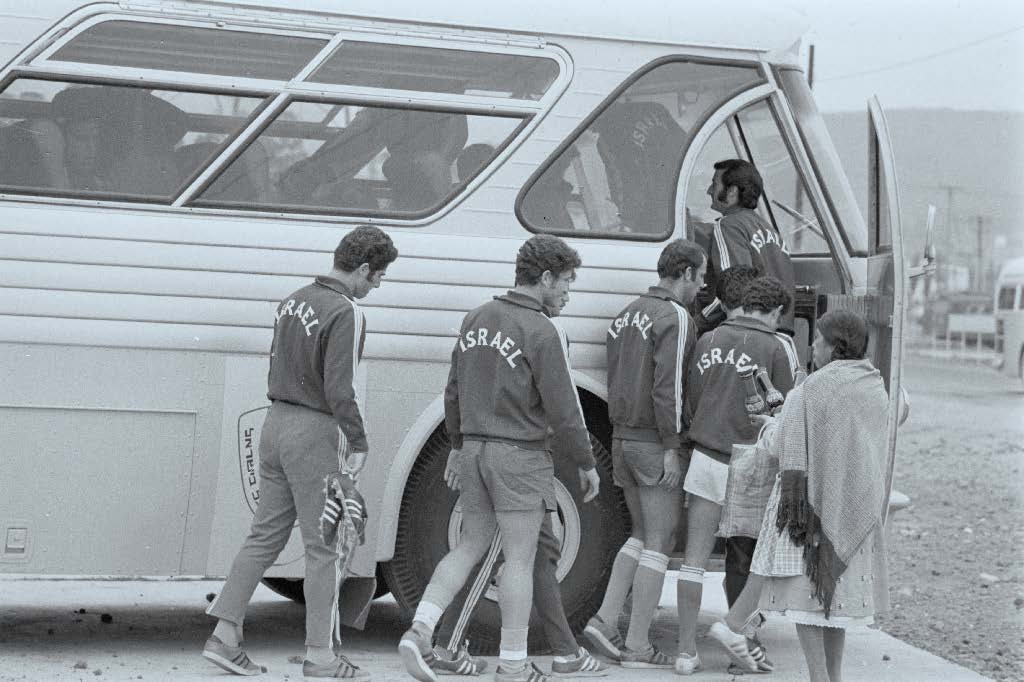
Selection cannot wait. As soon as he took up his post, Eddy made it clear to his flock that, when you have a talent deficit, to play with the best means, for a while, just to sweat it out. At the first few gatherings, he announced he would require his players to do three workouts. Giora Spiegel remembers the scene, and laughs just thinking about it: “One of us asks him, ‘Will we train three times a week? Even in the club, we don’t do that. And then Schaffer says, ‘No, three times a day.'”
It was not a bluff. When we went on training camps for the 1968 Olympics, and then for the 1970 World Cup, he woke us up at 6 a.m. to start with a jog,” says the creative midfielder. Then, at 10 o’clock, we had another training session, and finally a last one at 5 o’clock.”
The Schaffer method, then, shocked as much as it intrigued. He demanded only one thing of his players: obedience. He took the habit of grumbling and swearing in the language of Goethe. “I often disagreed with him,” says Spiegel, “but he was simply applying the tactical and managerial know-how he had learned in Germany.” He continues: “When he wasn’t making his youngsters run like crazy, Eddy was the nutritionist on duty, scrutinizing the lifestyle and diet of his players: He was hypertensive, always suspicious. He would spy on us to see if we were above reproach. He was like a watchdog over our plates. He would say, ‘Why are you eating that? Don’t eat that!’”
Luckily, his players were receptive to his German-style precepts, and quickly came to understand that all their sacrifices were made in the name of good: “At first, he had a little trouble with relationships, but we quickly understood that he was opening a new era in the history of Israeli soccer,” says Mordechai Spiegler, the best scorer in the history of the Israeli national team. “We had never been exposed to this level of professionalism before.”
One of the coach’s greatest successes was to impose discipline on his team, and to foster an esprit de corps that was almost military in its nature. This is no coincidence, even for a man who managed to escape conscription three times in his life. As Israel emerged triumphant from the Six Day War in 1967, Eddy sought to make the IDF a source of inspiration: “We have the best army in the world, we have the best engineers in the world. There’s no reason why we shouldn’t have great footballers too,” he liked to say.
“He liked to draw a parallel between our army and soccer,” confirms Giora Spiegel. “Our country has the image of a nation always at war. Since the genocide, we have always had to fight. That’s what he told the young players. He understood that this typical Israeli character could be applied to the field.”
To achieve his goals and transcend petty internecine squabbles, Schaffer managed to place the national team at the center of his men’s private lives, even if it meant drastically encroaching on them: “During his tenure, we played club games on the weekends, but during the week we trained three or four days in a kibbutz between Tel Aviv and Netanya,” describes Mordechai Spiegler. “When you spend more time with the national team than with your club and even your family, inevitably there is a unity that is created.” The climax of Schaffer’s martial approach came during the training camp in preparation for the World Cup in Mexico: to get them used to running at altitude, the coach took his players to Ethiopia, Switzerland and Colorado. “He had enlisted a lieutenant colonel who was head of physical training in the Israeli army,” recalls former Israeli midfielder Itzhak Shum. “In Mexico, we had the same physical fitness as soldiers.”

A man in a great hurry,, Schaffer soon reaped the rewards of his methods: the Khoolim Levanim (Blue and Whites, a metonym for the Israeli National Soccer Team) reached the quarter-finals of the 1968 Olympic Games, where they were eliminated by Bulgaria after extra time by a coin toss, as FIFA had not yet introduced the concept of penalty kicks. The highlight of Eddy’s work with the national team came two years later, when Israel won its only ticket to a World Cup. This came after dominating the Asia-Oceania qualifiers and winning a two-legged final round against Australia. Schaffer’s leadership, contested at the beginning, ultimately vindicated him at the end. Nevertheless, shortly before the tournament, few people believed in the team’s prospects: the foreign media presented it as a team of jokers, composed of two drivers, a salesman, an electrician, a mechanic, an advertising executive, a trader, a student, an accountant and a diamond dealer. This constituted a serious misconception. The Nivcheret (again, the National Team) of the 70s consisted of a veritable Murderer’s Row of players: tactically well balanced, keen, sharp, fit in body and in mind, the Khoolim Levanim seemed to be amateurs only in the tiny amount of money they were paid. Scientific and rigorous, Schaffer’s coaching also focused on refining the mental approach to the game: Israel was the only team in the 1970 World Cup to have a psychologist in its ranks–an American named Arie Nescher. Israel started the competition on the wrong note, however, by completely missing the mark against Uruguay, which won easily 2-0.
The second game of the group phase against Sweden should be the game of redemption. The moment chosen by the Dupond and Dupont of the Schaffer, Spiegel and Spiegler unit, to come out of the ranks. “I was a creative midfielder; I got the ball to everyone,” said Spiegel. Spiegler, meanwhile, was a striker, and more goal-oriented: “We formed a real tandem, we played a lot of one-twos, we liked to combine a lot.” The duo gave Israel the greatest moment in its footballing history. Namely, their one and only goal in the World Cup. “Spiegel dribbled past a bunch of players, passed to me, and I scored from 20 yards out. I had the wind at my back,” says Mordechai Spiegler. The goal was shot in the direction of Jerusalem. Final score: 1-1, against a finalist country three editions earlier.
The moment was grandiose on the scale of such a small state, which paradoxically did not have the chance to witness this feat of arms live. We used to watch the matches at best 24 hours after they were played,” explains diplomat Yakov Hadas-Handelsman, who, at the age of 13, watched the Nivcheret from Tel Aviv. It was too expensive to broadcast via satellite, so the Israeli media had a special envoy who traveled back and forth between Guadalajara, Toluca and Israel, bringing film of the matches. They were then broadcast on TV, in black and white.” The goal against Sweden was not just a flash in the pan.
For its third outing, the blue and white managed to muzzle Italy, future finalist (0-0) of the competition. Israel was eliminated, but it had succeeded in its tournament. The players could leave Mexico with a sense of accomplishment. “Qualifying for a World Cup with 16 participants is difficult enough, but keeping Facchetti and Mazzola’s Italy at bay was a tough task,” said Giora Spiegel. “We showed that we could hold our own, even against the big boys.” In fact, on their home ground, the Khoolim Levanim massively seduced the crowds: “We considered them as heroes,” continues ambassador Hadas-Handelsman. “Schaffer had brought us into the world’s elite.”
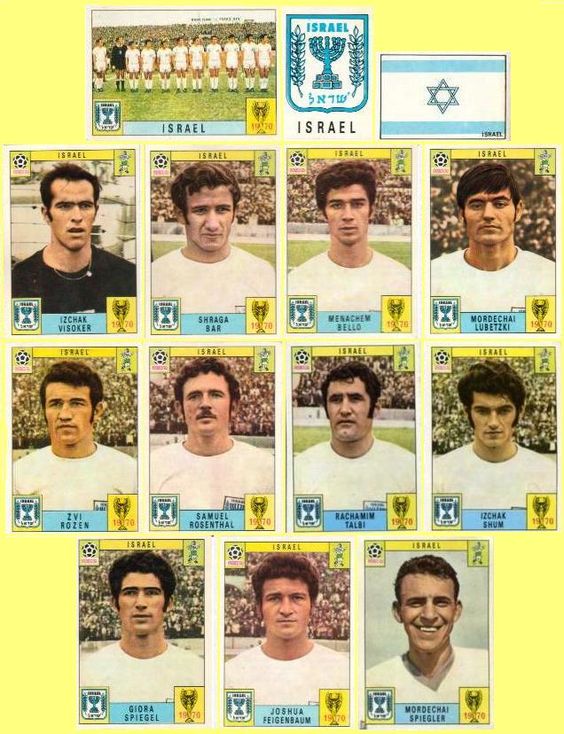
However, Eddy’s heyday with the national team was also his swan song. In alleged disagreement with his federation, he left his post as coach in the wake of the World Cup, a role he would take on again from 1978 to 1979, but this time, without much success. The rest of his career was spent as a representative of Adidas and Puma in Israel. Appropriately enough, given his lifelong connection to Germany, this position required him to travel regularly to West Germany. Schaffer’s other great accomplishment was to help the two countries renew their dialogue. On February 25, 1970, Eddy organized a match with his old friend Hennes Weisweiler, as the two men had been on opposite sides of the fence since their college days. On this occasion, some “Viva Germania!” chants even echoed in Tel Aviv’s packed Bloomfield Stadium.
“Gladbach was a glamorous team at the time, the best German team besides Bayern, in fact,” says Yakov Hadas-Handelsman. “I went to the stadium with a friend and saw all those players whose silhouettes I had cut out of the soccer magazines I bought as a kid: Günter Netzer, Berti Vogts, Jupp Heynckes…” However, there was a slight problem: at the break, Israel was swept away three goals to nil. Weisweiler approached his counterpart and asked him if he should order his men to take their foot off the gas. “Schaffer said, ‘No, play normally,'” says Yakov the diplomat. “He wanted his players to have an idea of what to expect at the World Cup,” adds Manfred Lämmer. Israel was finally swept aside 6-0, but the main thing was elsewhere: at the final whistle, the fans cheered the German artists. On the geopolitical level too, the initiative was a success. Is this the real match of the century?
“The German ambassador to Israel congratulated the Gladbach president afterward, saying that in ninety minutes eleven guys in shorts had done more to bring the two countries together than all the projects he had tried to set up over the past five years,” boasts Yakov Hadas-Handelsman. Two years later, in 1972, midfielder Shmuel Rosenthal, who had been in Mexico for the 1968 Olympics and the 1970 World Cup, became the first Israeli footballer to sign for a European club. It was not a coincidence that he signed for Weisweiler’s Mönchengladbach on the advice of Schaffer.
“For the younger generation, I think we are talking about a genuine hero, unfortunately forgotten. Eddy was a man who was willing to forgive the Germans, for whom life had to go on. And this was realized through his friendship with Hennes Weisweiler,” concludes director Dietrich Duppel, who, in the course of his documentary, was able to see that the widows of both men continue to maintain a sincere friendship despite the distance between them.
When Emmanuel Schaffer died of a brain tumor at the age of 88 in 2012, he left behind a legacy that went beyond sports. In their own way, Eddy’s two sons have followed in their father’s footsteps: the first, Moshe, practiced medicine at the Munich hospital for twenty years, while Avi, the younger, took over the family business in Tel Aviv. A way to perpetuate the name of a man who, throughout his life, never ceased to emphasize his multiple identities, Jewish and German. In 1952, the future Israeli Prime Minister Menachem Begin condemned the idea of a reconciliation with the German enemy of yesterday, declaring virulently that there was “not a German who has not murdered our fathers. Every German is a Nazi. Every German is a murderer.”
With a simple ball, a few amateur players, and an iron fist forged in Germany, Emmanuel Schaffer undoubtedly managed to prove him wrong.
Adrien Candau et Julien Duez
Quotations were collected by AC and JD, except those of Shum, Ynet and those of Schaffer, drawn from Blizzard and the work of Lämmer, Deutsch-israelische Fußballfreundschaft.
Our sincere thanks to the authors of the article, as well SoFoot and Eric Karnbauer for having allowed us to share it.
Notes
| 1 | The original article appeared in Edition 128 of SoFoot, published in summer 2020. The article is translated in English without modification, save for a change in title. The original title, “Schaffer d’état,” is a pun in French, recalling “affaire d’état,” or “affair of state » |
| 2 | The Franco-German prize committee wrote in explaining their award, “The authors in their article broach a topic that remains obscure in France and Germany: the life of Israeli football coach Emmanuel Schaffer. They describe the life and work of a man for whom German-Israeli reconciliation in the post-war era was above all a question of football. Julien Duez and Adrian Candau shed light on another aspect of football and show how sports can write the history of the world.” |


